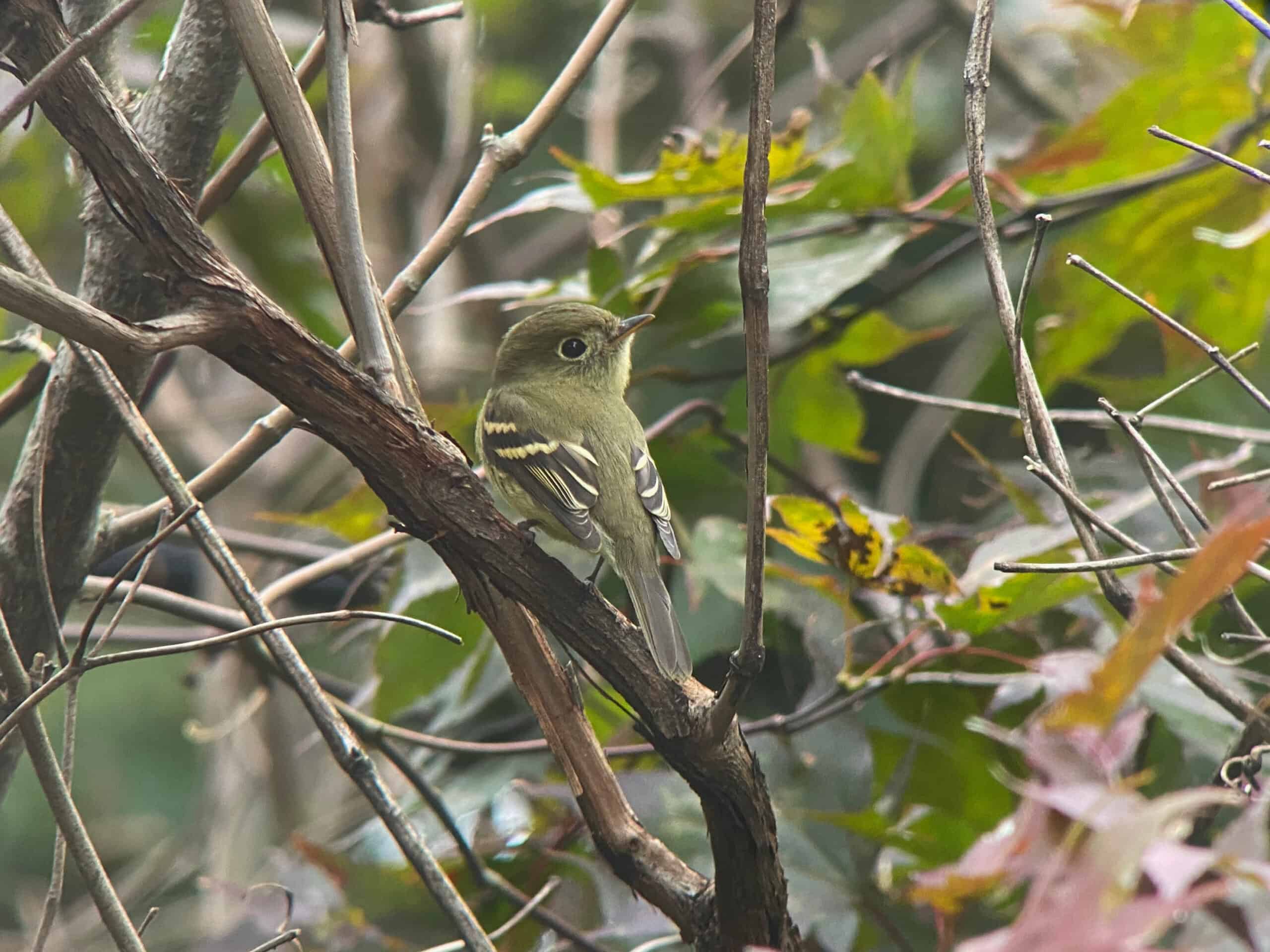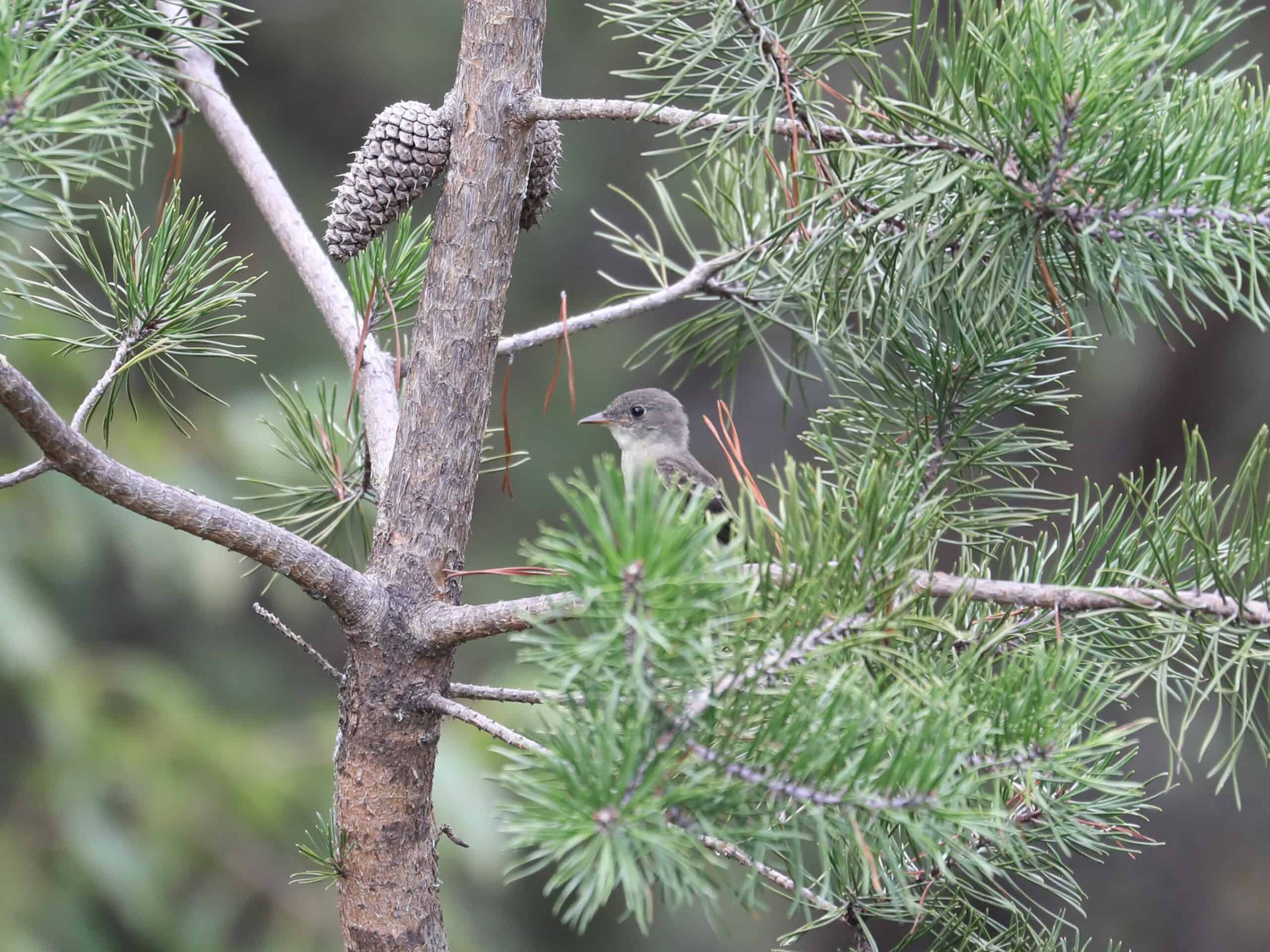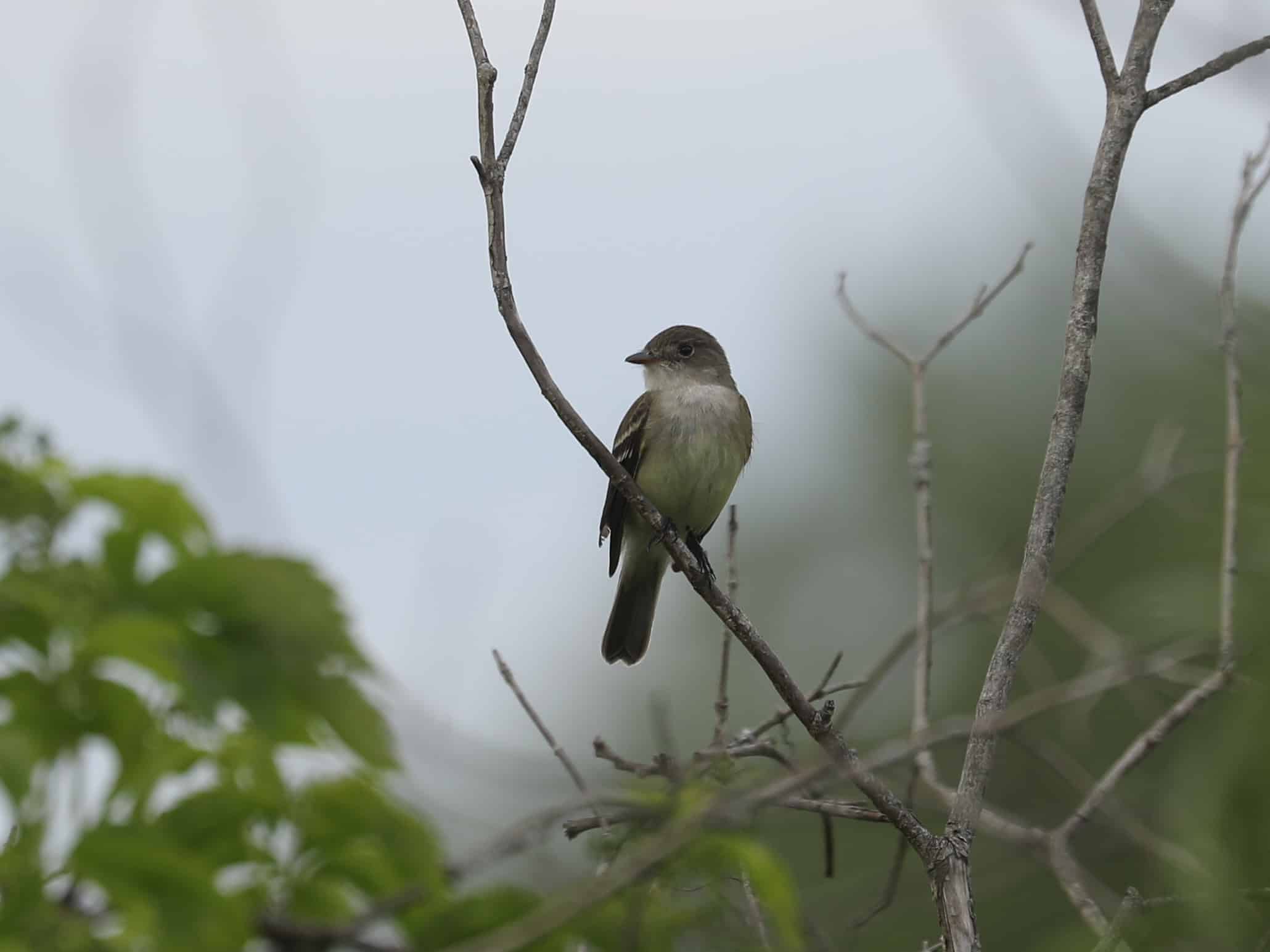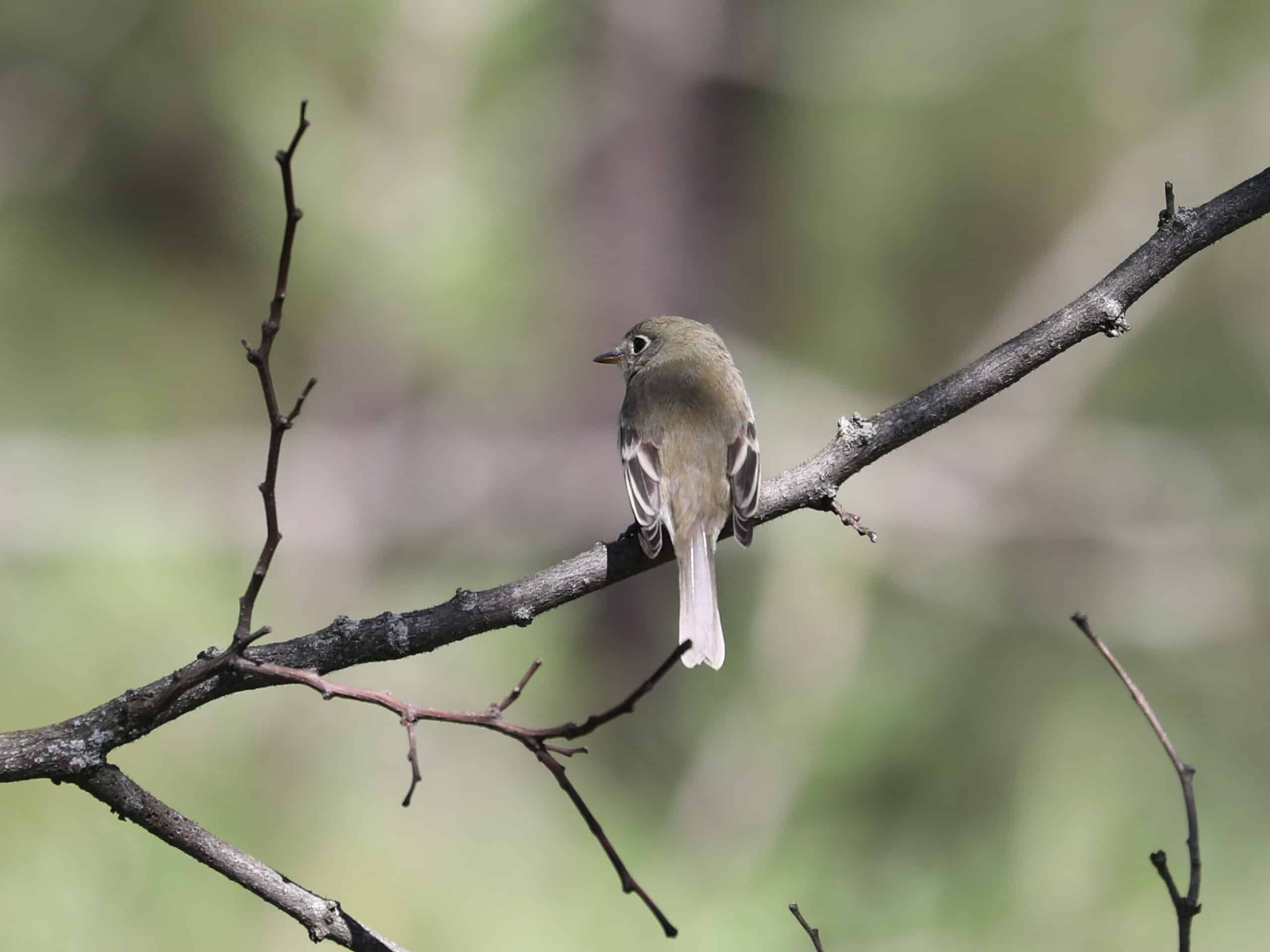The “Bane of Birdwatchers”: Flycatchers
Bird identification can be challenging, but few birds are trickier to identify than flycatchers in the genus Empidonax – the genus is often called the “bane of birdwatchers.” These birds, nicknamed “empids” represent 14 species worldwide, five of which visit Pennsylvania each year. All of Pennsylvania’s empids are small, mostly gray to olive in color, with two bars of lighter color on each wing. They are often distinguished from one another by very subtle features, such as the thickness and shape of the ring of light-colored feathers bordering each eye. Sometimes, identification of which species of flycatcher you’re seeing is impossible.
This is the best time of year to tell them apart, because they nest in different habitats and sing different songs. For the five Pennsylvania species:
- Yellow-bellied Flycatcher (top photo) – mature coniferous forests.
- Acadian Flycatcher (second photo) – mature deciduous.
- Alder Flycatcher (I’ve never photographed this species) – dense shrubby wetlands, especially along forest edges.
- Willow Flycatcher (third photo) – shrubby open wetlands.
- Least Flycatcher (fourth photo) – deciduous or mixed forests.
The Willow, Acadian, and Alder Flycatchers can be found nesting each year in the Susquehanna Valley. Yellow-bellied Flycatchers nest in Pennsylvania, but only in the northeastern corner of the state. Least Flycatchers pass through on migration, but fly up to Canada and northern New England to nest. Like most North American flycatchers, all of the empids will fly south in the fall. Depending on the species, you can find them wintering anywhere from Mexico to southern South America.
The “Bane of Birdwatchers”: Flycatchers
Bird identification can be challenging, but few birds are trickier to identify than flycatchers in the genus Empidonax – the genus is often called the “bane of birdwatchers.” These birds, nicknamed “empids” represent 14 species worldwide, five of which visit Pennsylvania each year. All of Pennsylvania’s empids are small, mostly gray to olive in color, with two bars of lighter color on each wing. They are often distinguished from one another by very subtle features, such as the thickness and shape of the ring of light-colored feathers bordering each eye. Sometimes, identification of which species of flycatcher you’re seeing is impossible.
This is the best time of year to tell them apart, because they nest in different habitats and sing different songs. For the five Pennsylvania species:
- Yellow-bellied Flycatcher (top photo) – mature coniferous forests.
- Acadian Flycatcher (second photo) – mature deciduous.
- Alder Flycatcher (I’ve never photographed this species) – dense shrubby wetlands, especially along forest edges.
- Willow Flycatcher (third photo) – shrubby open wetlands.
- Least Flycatcher (fourth photo) – deciduous or mixed forests.
The Willow, Acadian, and Alder Flycatchers can be found nesting each year in the Susquehanna Valley. Yellow-bellied Flycatchers nest in Pennsylvania, but only in the northeastern corner of the state. Least Flycatchers pass through on migration, but fly up to Canada and northern New England to nest. Like most North American flycatchers, all of the empids will fly south in the fall. Depending on the species, you can find them wintering anywhere from Mexico to southern South America.
About The Author
Dan Hinnebusch is the Ornithologist for Wild Birds Unlimited. Click to learn more.







